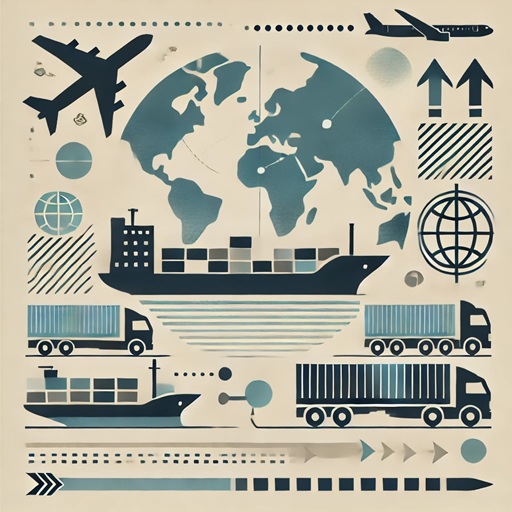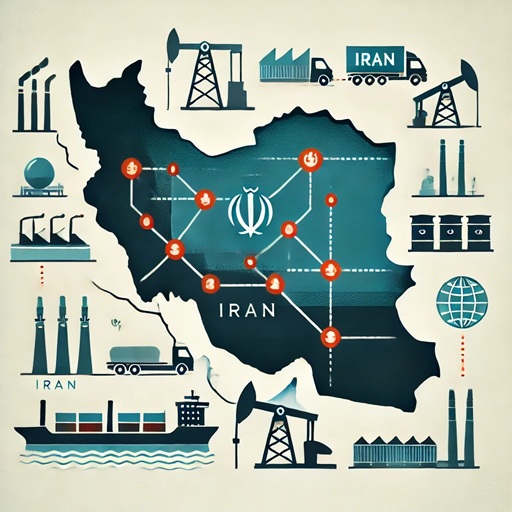Introduction:
Freight transportation and its related systems play a crucial role in the economic growth of a country. Advanced nations have strengthened their economic infrastructure by utilizing efficient transportation systems. Iran, with its strategic geographical location, holds significant potential in the international transportation sector. However, various challenges such as sanctions, an aging fleet, and bureaucratic obstacles have hindered the industry’s growth. This article examines the future outlook of international freight transportation in Iran, existing challenges, and proposed solutions.
- The Future of Freight Transportation in Iran With ongoing economic changes at both global and domestic levels, the demand for freight movement in Iran is expected to undergo significant transformations. Some key factors influencing the future of this industry include:
- Investment in road, rail, air, and maritime transportation infrastructure.
- Development of ports and enhancement of logistics services.
- Strengthening trade relations with regional countries and improving economic diplomacy.
- Adoption of modern technologies to optimize transportation and reduce costs.
- The Transportation Fleet A significant portion of Iran’s transportation fleet is aging, leading to reduced efficiency, increased fuel consumption, and higher maintenance costs. Some proposed solutions to improve fleet conditions include:
- Phasing out outdated vehicles and replacing them with new, fuel-efficient alternatives.
- Implementing advanced technologies to boost efficiency and reduce environmental pollution.
- Providing financial incentives for fleet modernization and supporting domestic transport companies.
- International Freight Services Delivering high-quality services in international freight transportation requires restructuring the organizational framework and adopting modern management techniques. Key recommendations include:
- Strengthening the link between transportation companies and drivers.
- Developing cargo information systems and utilizing digital platforms.
- Enhancing the insurance system and mitigating transportation-related risks.
- Simplifying customs procedures and reducing administrative bureaucracy.
- International Logistics and Transit Iran’s unique geopolitical position offers high potential for cargo transit. Efficient utilization of this capacity can lead to increased foreign exchange revenues and bolster Iran’s role in global supply chains. However, some existing challenges in this sector include:
- Competition from neighboring countries in transit services.
- Delays caused by complex customs regulations.
- Restrictions imposed by economic sanctions.
- Major Challenges Facing International Transportation Companies in Iran Companies operating in the international freight sector face numerous obstacles, including:
- Lack of coordination among government agencies and relevant transportation organizations.
- Stringent and outdated regulations that hinder trade facilitation.
- An aging transportation fleet and insufficient investment in modern infrastructure.
- High costs and lengthy processes for obtaining visas due to economic sanctions.
- Limited specialized training opportunities for drivers and logistics personnel.
- Practical Examples of Challenges and Proposed Solutions
Example 1: Managing Perishable Goods Transportation An Iranian company exporting fruits and vegetables to Russia faces issues such as customs delays and a shortage of refrigerated containers, leading to spoilage. Proposed solutions include:
- Establishing long-term contracts with transport companies to ensure a steady supply of refrigerated containers.
- Digitalizing customs processes to reduce clearance time.
- Enhancing coordination among relevant authorities to expedite export procedures.
Example 2: Transit of Goods from China to Europe via Iran Iran’s strategic transit route between China and Europe is underutilized due to a lack of coordination in railway networks and tariff-related challenges. Proposed solutions include:
- Improving railway infrastructure and increasing regional cooperation.
- Setting competitive transit tariffs to attract international traders.
- Implementing tracking technologies to enhance transparency in the transportation process.
- Conclusion and Proposed Strategies To improve and develop international freight transportation in Iran, the following strategies are essential:
- Investing in fleet modernization and integrating advanced transportation technologies.
- Reducing bureaucratic hurdles and streamlining administrative processes for transportation companies.
- Expanding trade relations with neighboring countries and establishing international transportation agreements.
- Training workforce and enhancing technical expertise in logistics and transportation.
- Developing road, rail, and maritime infrastructure to increase efficiency and reduce transportation costs.
By implementing these strategies, Iran can become a major hub for international transportation, securing a larger share in global trade.
- Suggested References
- World Bank – Logistics Performance Index (LPI) Report
- United Nations Conference on Trade and Development (UNCTAD) – Maritime Transport Review
- International Road Transport Union (IRU) – Reports on International Transport
- Iran’s Transportation and Terminals Organization – Industry Statistics and Analyses












